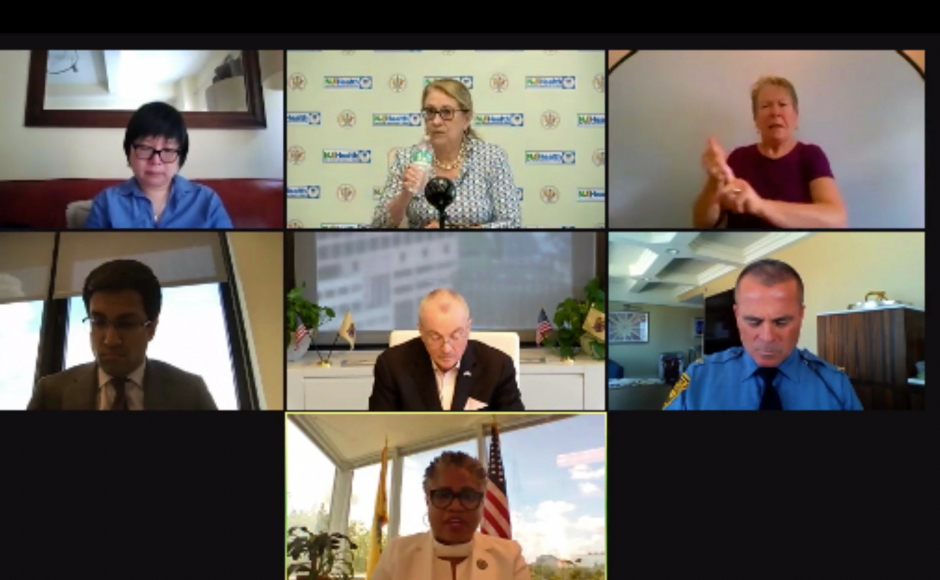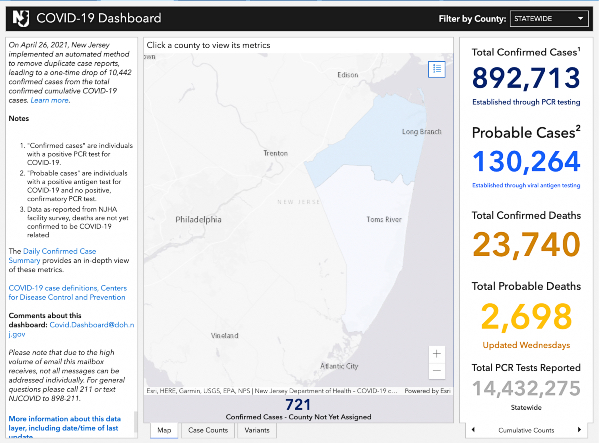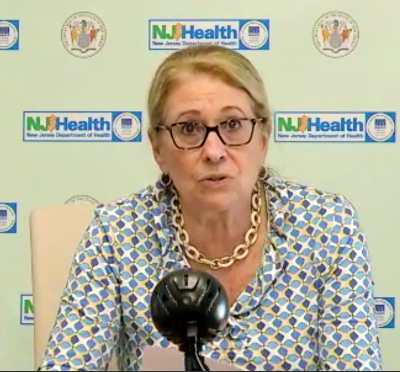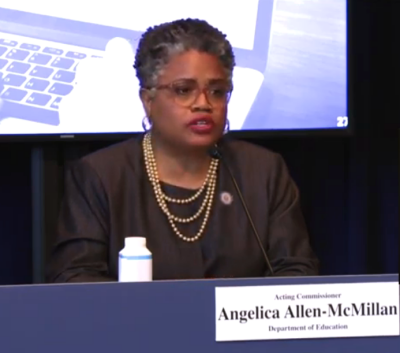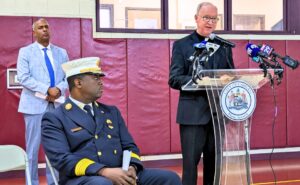Students will still be required to mask up while on the school bus, but officials have held off on issuing broader mask mandates until the CDC updates its guidance over the summer.
By Matt Skoufalos | June 28, 2021
Another 105 New Jersey residents have tested positive for novel coronavirus (COVID-19), bringing the statewide total to 892,713 cases confirmed via polymerase chain reaction (PCR) testing, Governor Phil Murphy reported Wednesday.
New Jersey is also reporting 47 new COVID-probable cases based on antigen tests, bringing the statewide total to 130,264 positive antigen tests.
Antigen tests have a faster turnaround time than PCR tests—sometime within 15 to 30 minutes—but are less reliable at detecting active infection of the virus, and more capable of reporting false positives.
Sadly, four more residents have perished from complications related to the virus, bringing the statewide, confirmed death toll to 23,740 lives lost during the pandemic.
In addition to those lab-confirmed fatalities, the state has acknowledged another 2,698 probable COVID-19-related deaths.
Since March 2020, 980 of every 100,000 New Jersey residents have been hospitalized with COVID-19, and 270 of every 100,000 have died from COVID-19-related complications.
More than 14.432 million polymerase chain reaction (PCR) tests for COVID-19 have been performed statewide, with a 10.154-percent positivity rate per 100,000 residents.
Rate of transmission (Rt) at 0.92, spot positivity lowest in South Jersey
The statewide average of COVID-19 spot positivity testing based on PCR test results stood at 1.02 percent June 24; in South Jersey, it was lowest, at 0.94 percent.
Rt, the variable that describes the seven-day, rolling-average, statewide rate of transmission of new COVID-19 cases, hit 0.92 on June 28.
Any Rt figure less than 1.0 means that each new COVID-19 patient is infecting fewer than one other person, on average, and the spread of the virus is decreasing.
Since its mid-April-2020 COVID-19 spike, the highest reported RT in New Jersey was 1.48, recorded August 1, 2020. Prior to artificially low, adjusted reports of 0.34 in the first week of May, the lowest in the past year was 0.62, recorded June 9, 2020. On May 21, 2021, it reached a new low, of 0.59.
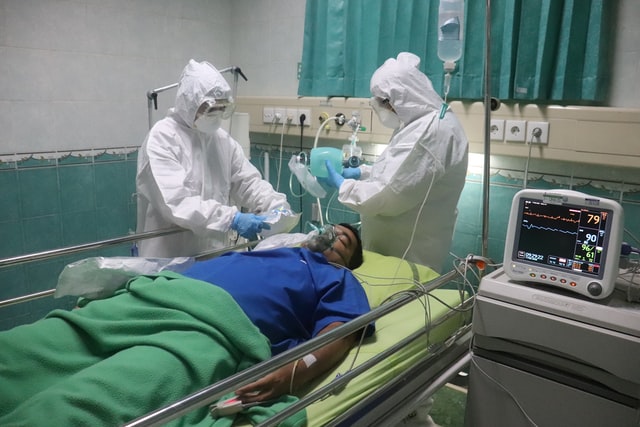
Simulated COVID-19 patient in a hospital bed. Photo by Mufid Majnun on Unsplash
Hospitalizations hold steady
Throughout New Jersey, 304 people currently are hospitalized with a suspected (74) or confirmed (230) case of COVID-19, Murphy said.
Among those hospitalized patients, 57 are in intensive or critical care, and 29 of the ICU and critical-care patients (52 percent) are on ventilators.
In New Jersey’s 71 critical care hospitals, 31 patients were hospitalized with COVID-19 yesterday, while 30 others were discharged.
Murphy again noted on Monday that the bulk of those people newly hospitalized with the virus are unvaccinated against it.
LTC update
Across the state, long-term care (LTC) centers have reported 1,482 cumulative outbreaks of COVID-19, and 27 are dealing with an active outbreak. LTCs account for 55,102 infected patients and staff in New Jersey, or 6.2 percent of total cases.
That includes 32,847 residents and 22,255 staffers sickened by the virus, as well as 8,062 lab-confirmed resident and staff deaths (34 percent of the statewide confirmed total), with facilities self-reporting 144 staff deaths.
Of 627 veterans residing in three state-run homes, 456 residents have tested positive for COVID-19, and 156 have died from complications related to the virus. Three hundred veterans have recovered from the virus. No resident is currently COVID-19-positive.
The facilities at Menlo Park, Paramus, and Vineland are staffed by 1,338 workers, two of whom are presently COVID-19-positive. The facilities have sustained two staff deaths related to the virus.
At state-run psychiatric facilities, 367 of 1,131 patients and 1,079 staff members have tested positive for COVID-19. Fourteen patients and eight staffers have died from complications related to the virus.
MISC cases and schools
To date, 128 New Jersey children aged 1 to 18 have been diagnosed with pediatric multisystem inflammatory syndrome (MISC)—one more than previously observed. Four of those cases were reported in Camden County, tied with Cumberland and Monmouth Counties for third-least in the state.
All those pediatric patients have tested positive for an active COVID-19 infection or the presence of COVID-19 antibodies, indicating exposure to the virus. No deaths have been associated with this syndrome in New Jersey, although several children have been hospitalized during their treatment for the illness.
Since August 1, 2020, 281 COVID-19 outbreaks encompassing 1,263 individual cases have been traced to schools in all 21 New Jersey counties. In Camden County, 18 outbreaks have been linked to 78 cases, sixth-most in the state.
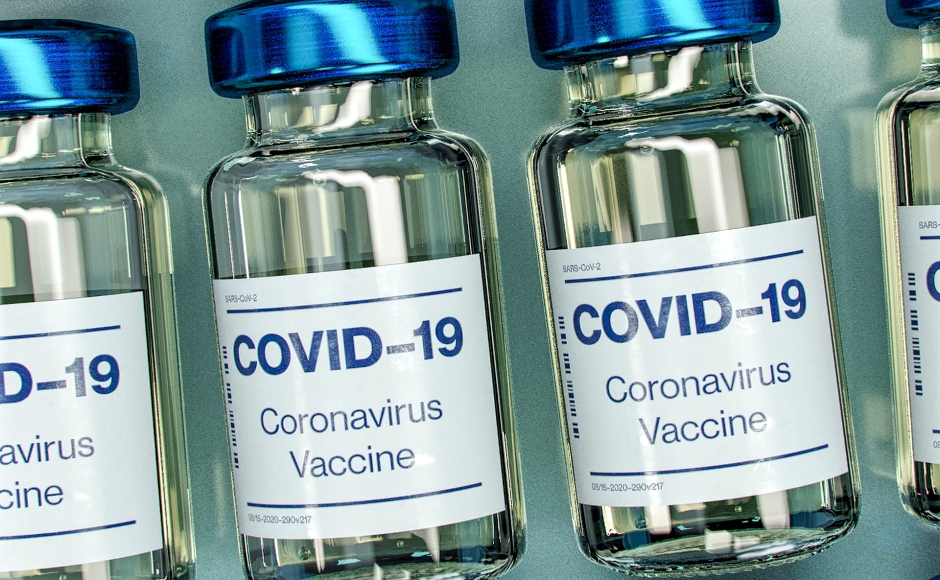
COVID-19 vaccine bottle mock-up. Photo by Daniel Schludi on Unsplash
Vaccination update: NJ surpasses 4.9M fully vaccinated people, 9.6M doses administered
Across New Jersey, 9.6 million COVID-19 inoculations have been administered.
Throughout New Jersey, 4.718 million people have been fully vaccinated in-state, having received either a one-shot formulation from Johnson and Johnson or both doses of the two-shot Pfizer or Moderna vaccines.
In Camden County, 516,716 doses have been administered, seventh-most in the state.
An estimated 525,048 New Jersey residents have received a vaccine dose outside of the state, of which 229,705 are estimated to have been fully vaccinated.
The first vaccines in the state were administered December 15, 2020; by February 8—55 days later—New Jersey had immunized its millionth resident. Twenty days thereafter, that count hit 2 million, and 3 million within two more weeks.
On March 29, New Jersey crossed the 4-million-dose threshold, and the state cleared 5 million doses over the weekend of April 10, 2021. Eight days after that, New Jersey hit the 6-million-dose mark. By May 3, 2021, the state had cleared 7 million doses administered, and two weeks later, it had surpassed 8 million doses.
As of June 2, 2021, the state had cleared 9 million administered doses and 4 million fully vaccinated New Jerseyans, and on June 18, hit 4.7 million vaccinated individuals, its target goal for 70 percent of the adult population of the state.
Health officials still on the lookout for B.1.617.2 ‘Delta’ variant
Mutated offshoots of COVID-19, or “variants of concern,” continue to circulate throughout New Jersey; the state has traced thousands of such cases to date, despite performing gene sequencing on roughly 2 percent of positive samples, Dr. Ed Lifshitz, head of the New Jersey communicable disease service, has said.
Last week, New Jersey Health Commissioner Judy Persichilli noted that the U.S. Centers for Disease Control (CDC) believes the B.1.617.2 “delta” variant, initially identified in India in December 2020, may become the leading variant in the United States within the next month, and is believed to be spread by “children and young people.”
The commissioner added that the delta variant “could result in local [COVID-19] surges among the unvaccinated.”
Delta currently accounts for 7.3 percent of the variants sequenced in New Jersey in the past four weeks (up from 5.1 percent last week), and is believed to be 40 to 60 percent more transmissible than other strains of the virus.
Presently, the most common COVID-19 variant in the United States is the B.1.1.7, or “alpha” variant, which was first identified in the United Kingdom, and has been detected in all 21 New Jersey counties.
B.1.1.7 has been associated with a 50-percent increase in COVID-19 transmission over earlier strains of the virus detected in New Jersey, and likely increased severity of infection based on hospitalization and case fatality rates.
Strain B.1.526, which originated in New York state, represents 16 percent of the variants identified in New Jersey in the past month, and is a “variant of interest,” Persichilli said.
The P.1 “Brazilian” variant accounts for 3.5 percent of the variants identified in the past month, and smaller percentages of the California variants B.1.427 and B.1.429 also were reported in the data.
NJ schools to return to full-day, in-person instruction in the fall
New Jersey schoolchildren will return to “full-day, full-time, in-person operations” in the fall, according to Angelica Allen-McMillan, Acting Commissioner of the New Jersey Department of Education (NJDOE).
NJDOE and the New Jersey Department of Health (NJDOH) issued health and safety guidance on reopening schools to the public Monday, which Persichilli described as “vital” for in-person instruction as well as for children’s safe returns to school.
Despite that emphasis, the strategies released by the agencies are recommendations and not mandatory standards; the guidance notes that “the absence of one or more of these strategies should not prevent school facilities for opening for full-day, in-person operation.”
They include information on mechanisms to inhibit the spread of COVID-19, including physical distancing, cohorting, hand-washing, disinfection and sanitization, masking, and quarantining when sick.
Because not all school-aged children are eligible for a COVID-19 vaccine, Persichilli noted that “schools should develop a layered approach” to pandemic regulations “to ensure safe and healthy communities,” with parents and caregivers monitoring children for signs of illness.
“It is critical that students who are sick do not attend school,” she said.
As “most K-12 schools will have a mixed population of fully vaccinated, partially vaccinated, and unvaccinated individuals at any given time,” districts are advised to “layer preventive methods” to protect the unvaccinated, to “actively promote vaccination for all eligible students and staff,” and to “consider school-wide vaccine coverage among students and staff as an additional metric to inform the need for preventive measures such as physical distancing and masking.”
Among the recommendations are suggestions about “maintaining physical distance between students to the extent practicable,” “putting procedures in place to identify and respond to a student or staff member who becomes ill with COVID-19 symptoms,” and “maintaining close communication with local health departments to share information and resources on COVID-19 transmission, prevention, and control measures and to establish procedures for notification and response to illness.”
The guidance also makes clear that the priority of the district should be doing everything possible to sustain in-person learning.
The issue with which most parents are concerned is whether students will be required to mask up while attending classes. The NJDOE and NJDOH guidance issued Monday notes that an update on masking is expected from the CDC prior to the start of the year “and will factor into the final recommendations from the state for masking this fall.”
“However, barring a significant change in health metrics, school districts will be able to determine masking policies at the local level,” the guidance reads.
“Regardless of the district’s policy on masking, schools cannot prevent students or staff from wearing masks if they choose,” it notes. As mandatory masking on public transit is still in effect, students are expected to wear face coverings on school buses as well.

